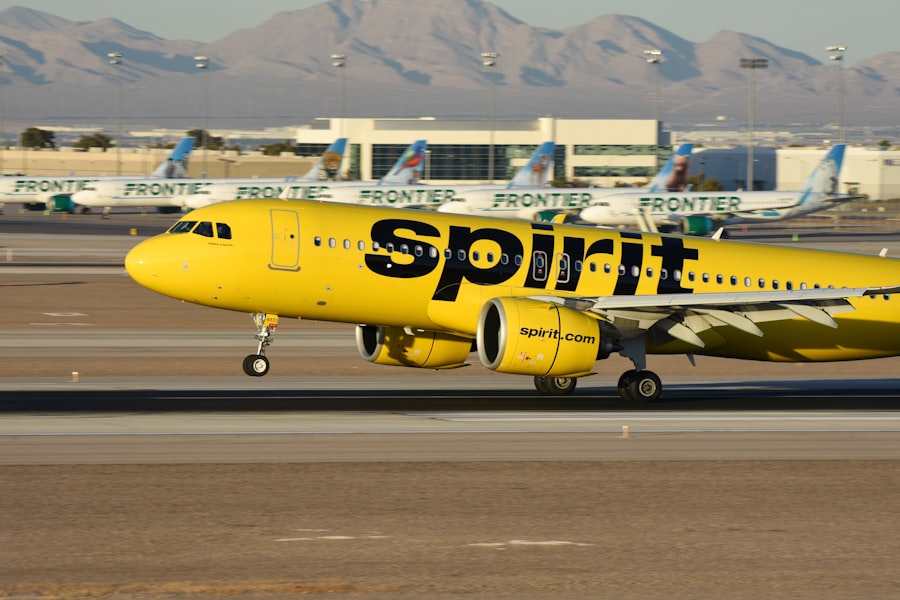The Airbus A320neo, which stands for “new engine option,” represents a significant evolution in the world of commercial aviation. Launched in 2010, this aircraft is part of the A320 family, which has been a cornerstone of Airbus’s product line since its introduction in the late 1980s. The A320neo was developed to meet the growing demand for more efficient and environmentally friendly aircraft, responding to the needs of airlines and passengers alike.
With its advanced technology and design enhancements, the A320neo has quickly become a favorite among airlines around the globe. The A320neo incorporates several key innovations that distinguish it from its predecessors. Most notably, it features new, fuel-efficient engines, specifically the Pratt & Whitney PW1100G Geared Turbofan and the CFM International LEAP-1A engines.
These engines not only provide improved fuel efficiency but also reduce noise levels and emissions, aligning with the aviation industry’s increasing focus on sustainability. Additionally, the A320neo boasts aerodynamic improvements, including wingtip devices known as Sharklets, which further enhance its performance and efficiency. As a result, the A320neo has positioned itself as a leading choice for airlines looking to modernize their fleets while minimizing operational costs.
Key Takeaways
- The Airbus A320neo is a popular narrow-body aircraft known for its fuel efficiency and advanced technology.
- The A320neo offers advantages such as reduced fuel consumption, lower operating costs, and increased range compared to previous models.
- Its fuel efficiency and use of sustainable aviation fuel contribute to a reduced environmental impact, making it an attractive option for airlines.
- The A320neo’s cabin design prioritizes passenger comfort with larger overhead bins, mood lighting, and quieter engines.
- With its impressive range and performance capabilities, the A320neo is a competitive option for both short and long-haul flights in the aviation market.
The Advantages of the A320neo
One of the most compelling advantages of the A320neo is its remarkable fuel efficiency. Airlines operating this aircraft can expect up to a 15% reduction in fuel consumption compared to earlier models in the A320 family. This significant improvement translates into lower operating costs, which is crucial for airlines striving to maintain profitability in an increasingly competitive market.
The combination of advanced engines and aerodynamic enhancements allows the A320neo to achieve these savings without compromising performance or range. In addition to fuel efficiency, the A320neo offers airlines greater flexibility in terms of route planning and capacity management. With a typical seating capacity ranging from 140 to 240 passengers, depending on the configuration, airlines can tailor their offerings to meet specific market demands.
This adaptability is particularly beneficial for low-cost carriers and full-service airlines alike, as it enables them to optimize their operations based on passenger load factors and route profitability. Furthermore, the A320neo’s ability to operate on shorter runways expands its potential destinations, allowing airlines to tap into underserved markets.
Fuel Efficiency and Environmental Impact

The fuel efficiency of the Airbus A320neo is not merely a financial boon for airlines; it also represents a significant step forward in reducing the environmental impact of air travel. The aviation industry has faced increasing scrutiny regarding its carbon footprint, and the A320neo addresses these concerns head-on. By achieving up to 15% lower fuel consumption compared to its predecessors, the aircraft contributes to a reduction in greenhouse gas emissions.
This is particularly important as global air traffic continues to grow, with projections indicating that passenger numbers could double over the next two decades. Moreover, the A320neo’s engines are designed with advanced technologies that minimize noise pollution, making it a more community-friendly option for airports located near urban areas. The Pratt & Whitney PW1100G engine, for instance, incorporates a geared fan design that allows for quieter operation during takeoff and landing phases.
This reduction in noise not only enhances passenger comfort but also helps mitigate the impact of aviation on local communities. As airlines increasingly prioritize sustainability in their operations, the A320neo stands out as a model of how modern engineering can align economic viability with environmental responsibility.
Cabin Design and Passenger Comfort
| Aspect | Metric |
|---|---|
| Cabin Space | Legroom, Headroom, Shoulder room |
| Seat Comfort | Cushioning, Lumbar support, Recline |
| Noise Level | Decibel level, Sound insulation |
| Interior Materials | Quality, Durability, Aesthetics |
| Climate Control | Temperature, Airflow, Air quality |
Passenger comfort is a critical consideration in modern aircraft design, and the Airbus A320neo excels in this area with its thoughtfully designed cabin. The aircraft features wider seats and larger overhead bins compared to earlier models, providing passengers with more personal space and improved storage options for carry-on luggage. The cabin layout can be customized by airlines to accommodate various seating configurations, allowing them to cater to different market segments effectively.
In addition to physical space enhancements, the A320neo incorporates advanced cabin technology that enhances the overall travel experience. For instance, many airlines have equipped their A320neo fleets with modern in-flight entertainment systems that offer passengers a wide range of options for movies, music, and connectivity. The cabin is also designed with improved lighting systems that can simulate natural daylight, helping to reduce passenger fatigue during longer flights.
These features collectively contribute to a more enjoyable flying experience, making the A320neo an attractive option for both leisure and business travelers.
Range and Performance
The performance capabilities of the Airbus A320neo are another key aspect that sets it apart from its competitors. With a maximum range of approximately 3,400 nautical miles (6,300 kilometers), the A320neo is well-suited for both short-haul and medium-haul routes. This versatility allows airlines to operate a wide variety of routes without needing to switch aircraft types, streamlining operations and reducing costs associated with fleet management.
The aircraft’s performance is further enhanced by its advanced flight control systems and aerodynamic design. The A320neo is equipped with fly-by-wire technology that provides pilots with precise control over the aircraft’s movements while also improving safety through automated systems that assist in navigation and handling. This technology not only enhances operational efficiency but also contributes to a smoother flying experience for passengers.
As airlines continue to seek ways to optimize their fleets for performance and efficiency, the A320neo stands out as a reliable choice that meets diverse operational needs.
The A320neo in the Market

Since its introduction, the Airbus A320neo has made a significant impact on the commercial aviation market. Airlines around the world have embraced this aircraft due to its combination of efficiency, performance, and passenger comfort. As of late 2023, thousands of A320neo family aircraft have been ordered by various airlines, making it one of the best-selling commercial jets in history.
This overwhelming demand reflects not only the aircraft’s capabilities but also its alignment with industry trends toward sustainability and cost-effectiveness. The competitive landscape for narrow-body aircraft has intensified as manufacturers vie for market share. Boeing’s 737 MAX series presents a direct challenge to the A320neo; however, Airbus has maintained a strong position by continuously innovating and responding to customer feedback.
Airlines appreciate the flexibility offered by the A320neo family, which includes variants such as the A321neo with increased capacity and range options. This adaptability allows airlines to tailor their fleets according to specific operational requirements while benefiting from shared maintenance practices across different models.
Future Developments and Innovations
Looking ahead, Airbus is committed to further enhancing the capabilities of the A320neo family through ongoing developments and innovations. One area of focus is the integration of sustainable aviation fuels (SAFs) into operations. These fuels have the potential to significantly reduce carbon emissions when used in place of traditional jet fuels.
Airbus has been actively collaborating with industry partners to promote SAF adoption and ensure that future generations of aircraft can operate using these greener alternatives. Additionally, advancements in digital technology are set to play a crucial role in shaping the future of aviation. The implementation of data analytics and artificial intelligence can optimize flight operations, improve maintenance schedules, and enhance overall efficiency.
Airbus is exploring these technologies as part of its commitment to innovation within the A320neo family. By leveraging data-driven insights, airlines can make informed decisions that enhance operational performance while minimizing environmental impact.
The Impact of the A320neo on Aviation
The Airbus A320neo has undeniably transformed the landscape of commercial aviation since its introduction over a decade ago. With its focus on fuel efficiency, passenger comfort, and environmental sustainability, it has set new standards for what modern aircraft can achieve. As airlines continue to navigate an evolving industry marked by challenges such as rising fuel prices and increasing regulatory pressures regarding emissions, the A320neo stands out as a beacon of innovation.
As we look toward the future of aviation, it is clear that aircraft like the A320neo will play a pivotal role in shaping sustainable air travel. With ongoing advancements in technology and a commitment to reducing environmental impact, Airbus is poised to lead the way in developing solutions that meet both airline needs and passenger expectations. The legacy of the A320neo will likely influence future generations of aircraft design and operation, ensuring that air travel remains accessible while prioritizing our planet’s health.


